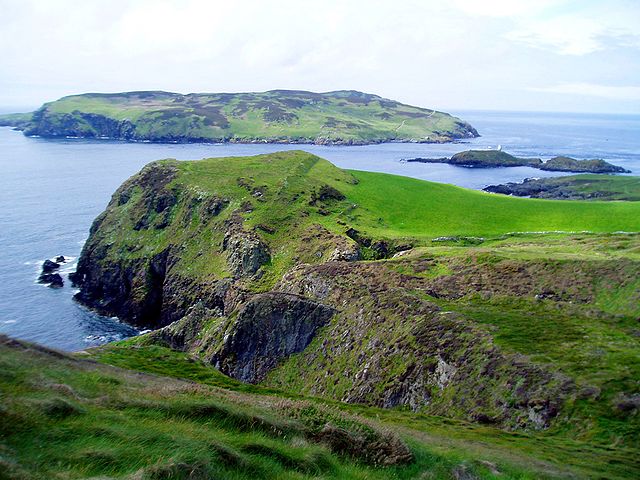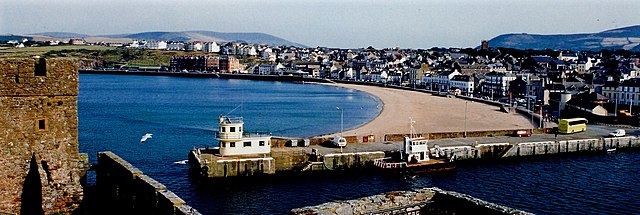The Fencibles were British regiments raised in the United Kingdom, Isle of Man and in the colonies for defence against the threat of invasion during the Seven Years' War, the American War of Independence, the French Revolutionary Wars, the Napoleonic Wars and the War of 1812 in the late 18th and early 19th centuries. Usually temporary units, composed of local recruits and commanded by Regular Army officers, they were usually confined to garrison and patrol duties, freeing Regular Army units to perform offensive operations. Most fencible regiments had no liability for overseas service.
Engraved portrait of Sir James Grant with a view the Strathspey Grant Fencibles
Captain John Jermyn Symonds, second in command of Fencibles at Onehunga.
The Isle of Man or Mann, is a self-governing British Crown Dependency in the Irish Sea, between Great Britain and Ireland. It is recognized as one of the Celtic nations, and is the homeland of the Manx people, a Celtic ethnic group. As head of state, Charles III holds the title Lord of Mann and is represented by a Lieutenant Governor. The government of the United Kingdom is responsible for the isle's military defence and represents it abroad.
Isle of Man
The Braaid in the central Isle of Man, with remnants of a Celtic-Norse roundhouse and two longhouses, c. AD 650–950
The Calf of Man seen from Cregneash
Peel is the island's main fishing port.






